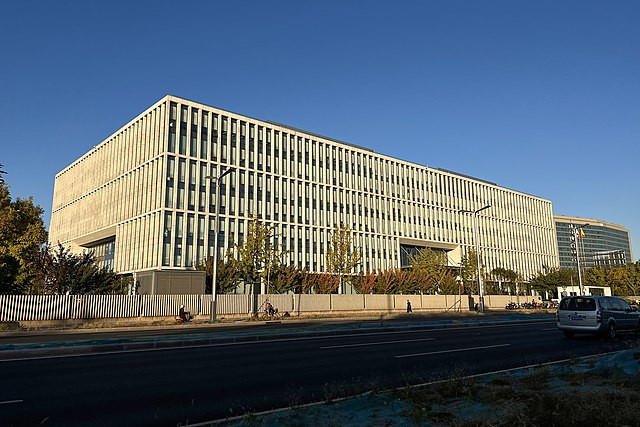In a bold move reminiscent of past high-stakes investments, BOE Technology Group Co., Ltd. announced on the evening of November 28 its plan to invest in the construction of a Generation 8.6 AMOLED production line project in Chengdu High-Tech West Zone, Sichuan Province, in collaboration with designated partners from the Chengdu High-Tech Zone. This project marks the first Generation 8.6 AMOLED production line in China. With an estimated construction period of about 34 months, the project involves a total investment of 63 billion yuan. The production line, designed to produce 32,000 glass substrates (measuring 2290mm x 2620mm) per month, will mainly manufacture high-end touch OLED displays for laptops and tablets.
BOE disclosed that the registered capital of the project company is 38 billion yuan, with BOE raising approximately 19.994 billion yuan and two partners each contributing around 9.003 billion yuan. The project company will secure a bank loan of 25 billion yuan.
Partnering with local governments for heavy asset investment has been a consistent practice in China's panel industry. In 2012, BOE collaborated with the governments of Hefei and Chongqing to build Generation 8.5 LCD production lines, with a total investment exceeding 60 billion yuan. This substantial investment has borne fruit, as BOE now holds the top spot in global display panel production capacity. Currently, BOE is involved in the LCD, OLED, and MicroLED sectors, owning 12 G4.5-G10.5 LCD production lines and 3 G6 AMOLED production lines.
The company's management cited two reasons for this significant reinvestment in the AMOLED production line: to synchronize with international peers in product offerings and to seize the "blue ocean" of high-generation AMOLED semiconductor displays; and to collaborate with numerous well-known domestic and international brands to promote the upgrade of mid-sized IT products to OLED screens, thereby opening up a vast market for mid-sized OLED screen products.
The "international peer" referred to here is Samsung Display. Samsung Display, a subsidiary of Samsung, is currently the world's leading OLED panel manufacturer and supplies displays for Apple's flagship smartphones. Earlier this year, Samsung announced the construction of the world's first Generation 8.6 AMOLED production line. According to Yonhap News Agency, Samsung Display plans to invest 41 trillion won (approximately 22.6 billion yuan) by 2026 to upgrade its production line, which will be used for OLED panels in tablets, laptops, and other IT devices, and is expected to start mass production in 2026. This will make it the world's first Generation 8.6 OLED production line for IT devices.
In terms of timeline, Samsung Display's Generation 8.6 AMOLED production line is scheduled to start production in 2026, while BOE plans to begin production in 2027. Compared to the previous lag of Chinese panel companies in the LCD field, this time gap is not significant.
AMOLED can be understood as a smaller version of OLED, with superior display effects compared to LCD panels. It also features flexibility and low energy consumption, mainly used in smartphones and tablets. Previously, BOE entered Apple's smartphone supply chain with its AMOLED products.
Regarding production technology, BOE responded to investors that based on the technical capabilities accumulated in the Generation 6 flexible AMOLED production line, the Generation 8.6 AMOLED production line plans to apply upgraded display technology to better cater to high-end IT products. The product form will mainly be HybridOLED, while also compatible with flexible OLED. Hybrid technology uses glass as the base, combined with TFE flexible packaging technology. This technology, along with the company's mature backplane technology and light-emitting device structure, enables products to have lower power consumption, longer life, and better image quality.
Regarding the capital expenditure and depreciation plan for this production line, BOE stated that out of the total investment of 63 billion yuan, equipment investment accounts for more than 60% (i.e., more than 37.8 billion yuan). According to the projected construction schedule, capital expenditures are expected to occur over the next five years in stages. Considering the timeline for line lighting, ramp-up, and asset capitalization, depreciation is expected to begin in 2027.
BOE is targeting the mid-sized tablet/laptop computer product upgrade market as smartphone market sales decline year by year. Data from Omdia shows that in 2022, the shipment of OLED laptop computer panels was about 6 million units, a year-on-year increase of 19%. According to DSCC forecasts, by 2026, OLEDs in the high-end IT market will grow at a compound annual growth rate of 51% to 44 million units, with OLED displays accounting for 75% of the high-end IT market share. BOE believes that as the capacity of the Generation 8.6 AMOLED production line is gradually released, the penetration rate of OLED products will rapidly increase, making them a significant choice for high-end products.
However, BOE's long-term large-scale investment in panels has significantly impacted its performance and stock price. In the first three quarters of this year, BOE A achieved revenue of 126.5 billion yuan, a year-on-year decrease of 4.69%; net profit was 1.022 billion yuan, a year-on-year decrease of 80.68%. As of the close of November 29, the company's stock price was 3.91 yuan per share, down 0.26%, and did not rally due to the new investment.



